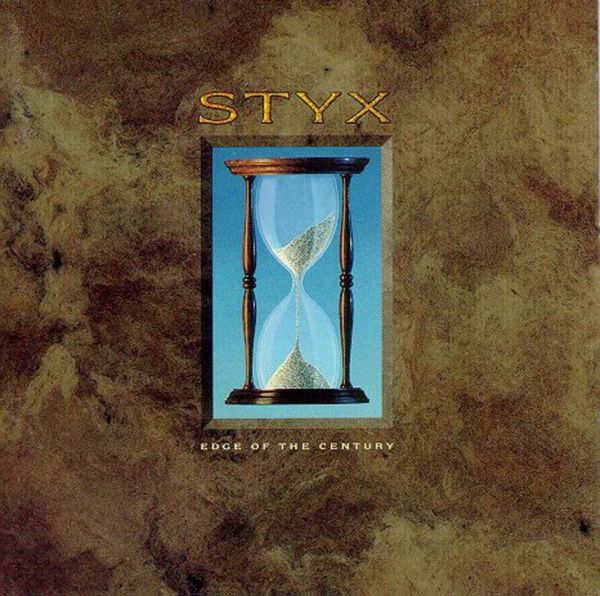
Edge of the Century (1990)

1.Love is the Ritual
2.Show Me the Way
3.Edge of the Century
4.Love at First Sight
5.All in a Days Work
6.Not Dead Yet
7.World Tonite
8.Carrie Ann
9.Homewrecker
10.Back to Chicago
By the late 1980s, the writing was on the wall. Styx, once a powerhouse of arena rock theatre and slick chart-toppers, had fractured into three independent forces—Shaw, DeYoung, and Young—each pursuing solo ambitions that, though sometimes interesting, never recaptured the alchemy of the band’s heyday. For a time, the idea of a full reunion remained little more than an industry whisper. In 1988, DeYoung was ready but Shaw was unavailable. Come 1990, DeYoung had cleared his schedule—but now it was Shaw who had moved on, aligning himself with the then-rising supergroup Damn Yankees.
Enter Glen Burtnik. A relatively unknown New Jersey guitarist and songwriter, Burtnik stepped into a role that few would envy—taking over for one of the most recognizable voices and faces in the band’s history. To his credit, he didn’t tiptoe in. Like Shaw’s own entry in the early ’70s, Burtnik wasted no time staking his claim, co-writing nearly half the record and even contributing the title track, Edge of the Century.
The difference, of course, was context. Shaw was replacing an unknown in a band still on the rise. Burtnik was replacing Shaw in a band already etched into rock’s collective memory. And while talent was never in question, perception often is. As Lawrence Gowan would later learn, excellence alone can’t always bridge the sentimental divide. That said, Burtnik’s contributions here are far from pedestrian. Love is the Ritual—a muscular, modern rock single—barely made a dent on the charts, but it certainly dispelled any lingering doubts about the band’s ability to still “rock.” World Tonite is equally effective, a tight, confident entry that manages to channel some of the band’s earlier energy without feeling retrograde. Where Burtnik falters slightly is on the acoustic number All In A Day’s Work, a subdued accordion-laced ballad co-written with DeYoung that, while pleasant enough, never quite transcends its own earnestness.
One of Styx’s long-standing challenges was reconciling its trio of very different writers. On Edge of the Century, this creative divergence is more pronounced than ever. DeYoung, by now firmly entrenched in his Broadway-leaning instincts, offers up the sentimental closer Back to Chicago, a nostalgic homage to his hometown that, while not without its lyrical grace, sits awkwardly beside J.Y.’s gritty thunderclap Homewrecker—a track that, incidentally, DeYoung also co-wrote. It’s a jarring juxtaposition, emblematic of a band still trying to decide which direction to face.
Then there’s Not Dead Yet, a curious anomaly. With DeYoung on vocals and an outside writer (a rarity since the Wooden Nickel days) involved, the track seems determined to prove that Dennis could still deliver rockers. The result? A song that rocks, certainly, but also feels a little too calculated in its delivery. Fortunately, DeYoung redeems himself with the album’s one bona fide hit, Show Me the Way. Released at the height of the Gulf War, the song unexpectedly struck a cultural nerve. Critics would later argue that its chart success was tied more to circumstance than merit—a lazy claim. The truth is, the song holds up on its own; the war simply gave it a wider audience. Love at First Sight, another DeYoung-led track, managed to chart respectably, but suffered from overexposure and melodic fatigue—especially after the fiftieth listen.
Despite its oddities, Edge of the Century did what many didn’t expect—it went gold. No small feat for a band missing a core member. But it also underscored a lingering truth: if Styx was to truly return, they would need Shaw back on the marquee. The band seemed to know this too. Sessions for a follow-up album were begun, demos laid down, and momentum cautiously built. Then A&M pulled the plug. The label dropped them shortly after Edge ran its course, shelving the new material permanently.
In the end, Edge of the Century is less a comeback and more a curious intermission. It proved Styx could still function—a
Go back to the main page
Go To Next Review